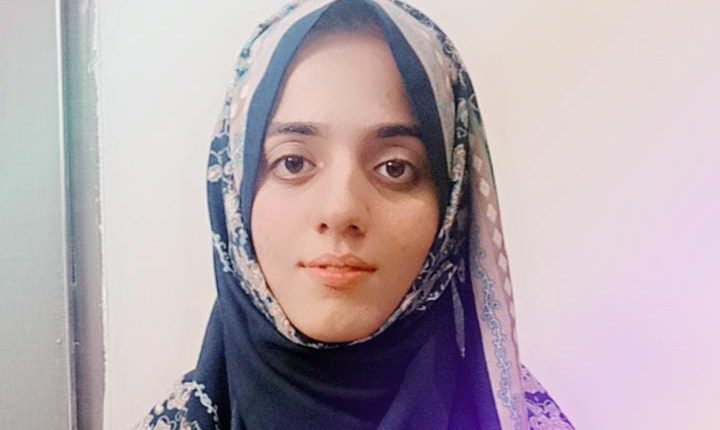By Noor ul Ain Kazmi
October 27 stands as one of the darkest days in the history of South Asia. On this day, Indian troops landed in Srinagar under the pretext of the controversial Instrument of Accession signed by Maharaja Hari Singh. For the people of Jammu and Kashmir, this was not a step toward freedom but the beginning of a long occupation. Ever since, Kashmir has been at the center of a territorial dispute, with the United Nations recognizing it as unresolved and awaiting the promised right to self-determination. For Kashmiris, 27 October is remembered as Black Day, a symbol of betrayal, pain, and a denied future.
The so-called Instrument of Accession, claimed by India, remains mired in controversy and deception. Maharaja Hari Singh, a ruler who had already lost control of most of his territory amid a popular uprising, had neither the moral authority nor the consent of his people to decide their fate. India used this alleged accession as a justification for its military intervention, turning a political question into a territorial conquest. In response to the escalating conflict, the United Nations intervened in 1948 and passed a series of resolutions, including UNSC Resolutions 47, 51, and 91, which clearly recognized Kashmir as a disputed territory and called for a free and impartial plebiscite to determine its future. However, India’s continued defiance of these binding resolutions exposed its duplicity, proclaiming democracy while denying Kashmiris their most fundamental democratic right. The betrayal of the Maharaja’s deceit, followed by India’s prolonged occupation, transformed Kashmir’s destiny from autonomy to annexation, igniting a freedom struggle that continues even today. For Kashmiris, Black Day is not just a remembrance of invasion but a powerful assertion that justice and self-determination cannot be suppressed by force.
What was once known as “Paradise on Earth,” with its serene valleys and snow-capped mountains, soon became the most militarized region in the world. The presence of armed forces altered daily life beyond recognition. Streets filled with checkpoints, routine curfews, and the constant echo of gunfire replaced the calm that once defined the valley. Entire generations grew up knowing nothing but fear, uncertainty, and repression — their aspirations overshadowed by the boots of occupation.
The discovery of unmarked mass graves, the plight of widows and “half-widows” whose husbands disappeared but were never confirmed dead, and the widespread use of torture are stark reminders of the human tragedy unfolding in the valley. The trauma is not only physical but also psychological. Children grow up amid barbed wire, raids, and fear, carrying forward scars that may never heal.
The human cost of this conflict has been devastating. International organizations such as Amnesty International, Human Rights Watch, and the United Nations have consistently highlighted grave human rights violations in Kashmir. Arbitrary arrests, custodial torture, and enforced disappearances have left thousands of families shattered. Draconian laws like the Armed Forces (Special Powers) Act (AFSPA) and the Public Safety Act (PSA) give sweeping powers to security forces while shielding them from accountability.
The situation took an even more drastic turn on 5 August 2019, when the Indian government revoked Articles 370 and 35A of its Constitution. These provisions had granted Jammu and Kashmir a special autonomous status and protected its demographic identity. Their abrogation stripped the region of its political safeguards and identity in one stroke. The move was enforced under a blanket of silence — a complete communications blackout, suspension of internet and phone services, and mass detentions of political leaders, activists, and ordinary citizens. The valley was effectively turned into an open-air prison where millions were cut off from the world.
This unilateral step also raised fears of demographic re-engineering, as the scrapping of Article 35A allowed non-residents to purchase land and claim domicile. For Kashmiris, this was seen not merely as a political betrayal but as an existential threat to their culture, faith, and identity. Since the abrogation, repression has only deepened. Journalists face intimidation, dissenters are silenced, and prolonged internet shutdowns have crippled education, business, and healthcare. The local economy, heavily reliant on tourism, handicrafts, and agriculture, has suffered severe blows, pushing thousands into poverty. Despite this, the people of Kashmir continue to resist, holding onto their traditions, art, and collective memory as acts of quiet defiance.
The story of Kashmir is the story of a paradise turned into a battleground — a wound in the heart of the Himalayas that bleeds with every passing year. The occupation on 27 October 1947 marked the beginning of this tragedy, while the abrogation of Articles 370 and 35A in 2019 deepened the wound, silencing voices and intensifying human rights abuses.
Kashmiris still await the fulfillment of promises made to them — the right to decide their future through self-determination. Until that day comes, 27 October will remain a symbol of unhealed pain and a reminder to the world of its moral responsibility toward the people of Kashmir.
Noor ul Ain Kazmi is a student of BS Peace & Conflict Studies from National Defence University, Pakistan, and a researcher at the Kashmir Institute of International Relations

